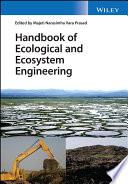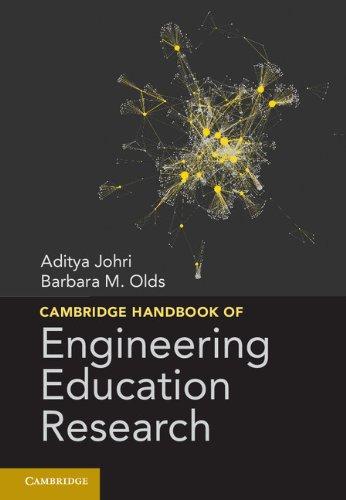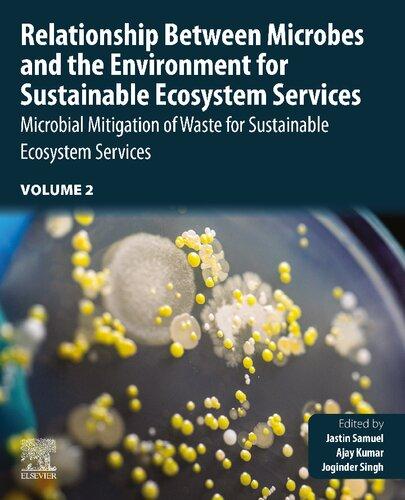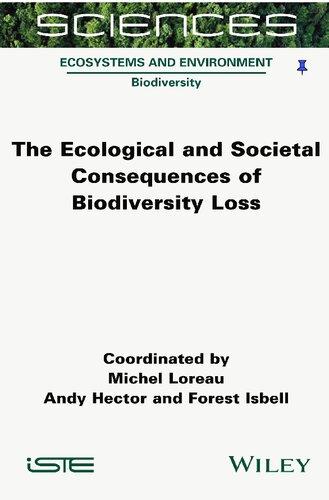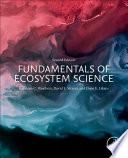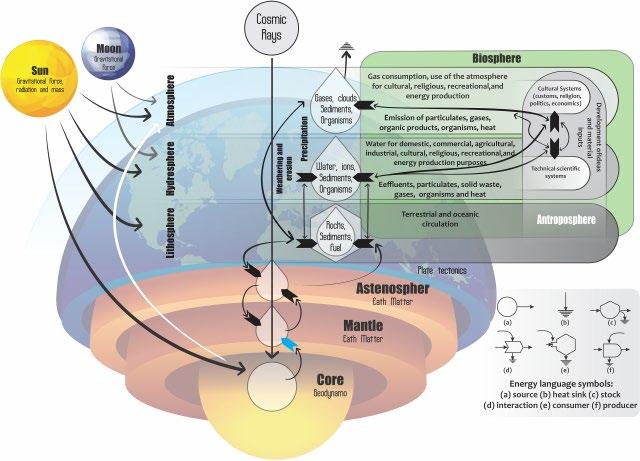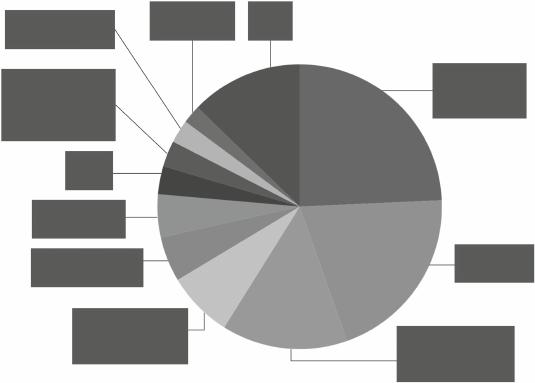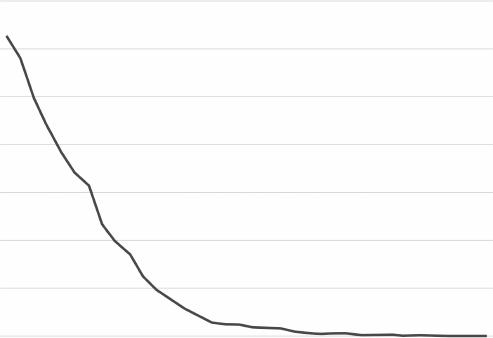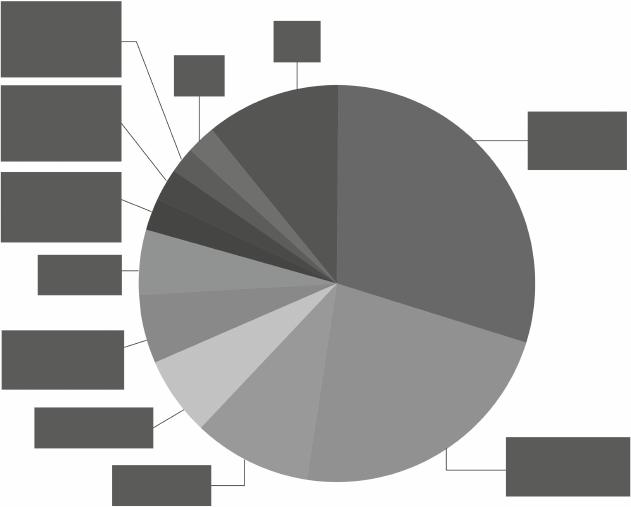Handbook of Ecological and Ecosystem Engineering
Edited by Majeti Narasimha Vara Prasad
School of Life Sciences
University of Hyderabad (an Institution of Eminence) Hyderabad, Telangana, India
This edition first published 2021 © 2021 by John Wiley & Sons Ltd
All rights reserved. No part of this publication may be reproduced, stored in a retrieval system, or transmitted, in any form or by any means, electronic, mechanical, photocopying, recording or otherwise, except as permitted by law. Advice on how to obtain permission to reuse material from this title is available at http://www.wiley.com/go/permissions.
The right of Majeti Narasimha Vara Prasad to be identified as the author of this work has been asserted in accordance with law.
Registered Offices
John Wiley & Sons, Inc., 111 River Street, Hoboken, NJ 07030, USA
John Wiley & Sons Ltd, The Atrium, Southern Gate, Chichester, West Sussex, PO19 8SQ, UK
Editorial Office
The Atrium, Southern Gate, Chichester, West Sussex, PO19 8SQ, UK
For details of our global editorial offices, customer services, and more information about Wiley products visit us at www.wiley.com.
Wiley also publishes its books in a variety of electronic formats and by print-on-demand. Some content that appears in standard print versions of this book may not be available in other formats.
Limit of Liability/Disclaimer of Warranty
In view of ongoing research, equipment modifications, changes in governmental regulations, and the constant flow of information relating to the use of experimental reagents, equipment, and devices, the reader is urged to review and evaluate the information provided in the package insert or instructions for each chemical, piece of equipment, reagent, or device for, among other things, any changes in the instructions or indication of usage and for added warnings and precautions. While the publisher and authors have used their best efforts in preparing this book, they make no representations or warranties with respect to the accuracy or completeness of the contents of this work and specifically disclaim all warranties, including without limitation any implied warranties of merchantability or fitness for a particular purpose. No warranty may be created or extended by sales representatives, written sales materials or promotional statements for this work. This work is sold with the understanding that the publisher is not engaged in rendering professional services. The advice and strategies contained herein may not be suitable for your situation. You should consult with a professional where appropriate. Neither the publisher nor author shall be liable for any loss of profit or any other commercial damages, including but not limited to special, incidental, consequential, or other damages. The fact that an organization, website, or product is referred to in this work as a citation and/or potential source of further information does not mean that the publisher and authors endorse the information or services the organization, website, or product may provide or recommendations it may make. Further, readers should be aware that websites listed in this work may have changed or disappeared between when this work was written and when it is read. Neither the publisher nor authors shall be liable for any loss of profit or any other commercial damages, including but not limited to special, incidental, consequential, or other damages.
For general information on our other products and services or for technical support, please contact our Customer Care Department within the United States at (800) 762-2974, outside the United States at (317) 572-3993 or fax (317) 572-4002.
Wiley also publishes its books in a variety of electronic formats. Some content that appears in print may not be available in electronic formats. For more information about Wiley products, visit our web site at www.wiley.com.
Library of Congress Cataloging-in-Publication Data
Names: Prasad, M. N. V. (Majeti Narasimha Vara), 1953– editor.
Title: Handbook of ecological and ecosystem engineering / M.N.V. Prasad, University of Hyderabad, School of Life Sciences
Description: First edition. | Hoboken : Wiley, 2021. | Includes bibliographical references and index.
Identifiers: LCCN 2020051312 (print) | LCCN 2020051313 (ebook) | ISBN 9781119678533 (hardback) | ISBN 9781119678502 (adobe pdf ) | ISBN 9781119678601 (epub)
Subjects: LCSH: Ecological engineering. | Sustainable engineering. Classification: LCC GE350 .P73 2021 (print) | LCC GE350 (ebook) | DDC 628–dc23
LC record available at https://lccn.loc.gov/2020051312
LC ebook record available at https://lccn.loc.gov/2020051313
Cover Design: Wiley
Cover Image: Courtesy of Maibam Meiti Dhanaraj
Set in 9.5/12.5pt STIXTwoText by Straive, Pondicherry, India
Contents
List of Contributors xvii
Preface xxi
1 Ecological Engineering and Ecosystem Services – Theory and Practice 1 Fábio Carvalho Nunes, Thaís de Marchi Soares, Lander de Jesus Alves, José Rodrigues de Souza Filho, Cláudia Cseko Nolasco de Carvalho, and Majeti Narasimha Vara Prasad
1.1 Introduction 1
1.2 Ecological Engineering: History and Definition 3
1.3 Ecosystem Services: History, Concepts, and Dimensions 7
1.3.1 Sizing Ecosystem Services 10
1.3.2 Agriculture and Ecosystem Services 15
1.4 Final Considerations: Challenges for the Future 19 Notes 20
References 20
2 Ecological and Ecosystem Engineering for Economic-Environmental Revitalization 25 Bruno Barbosa and Ana Luísa Fernando
2.1 Introduction 25
2.2 Revitalization of Physical/Environmental Factors 27
2.2.1 Low Temperature 27
2.2.2 Limited Soil Drainage and Shallow Rooting Depth 28
2.2.3 Unfavorable Texture and Stoniness 29
2.2.4 Sloping Areas 30
2.2.5 Dryness 30
2.2.6 Waterlogging 31
2.3 Revitalization of Chemical Factors 32
2.3.1 Acidity 32
2.3.2 Heavy Metals and Organic Contaminants 33
2.3.3 Salinity and Sodicity 34
2.4 Economic Revitalization of Degraded Soil Ecosystems 35
2.5 Conclusions 36
References 37
3 Environmental Issues and Priority Areas for Ecological Engineering Initiatives 47
Sanchayita Rajkhowa, Nazmun Ara Khanom, and Jyotirmoy Sarma
3.1 Introduction 47
3.2 Basic Concepts of Ecological Engineering 50
3.3 Practice and Implication of Ecological Engineering 53
3.4 Priority Areas for Ecological Engineering 54
3.4.1 Coastal Ecosystem Restoration 55
3.4.2 Mangrove Restoration 56
3.4.3 River and Wetland Restoration 57
3.4.4 Ecological Engineering in Soil Restoration and Agriculture 59
3.5 Conclusion 61
Notes 62
References 63
4 Soil Meso- and Macrofauna Indicators of Restoration Success in Rehabilitated Mine Sites 67
Sara Pelaez Sanchez, Ronan Courtney, and Olaf Schmidt
4.1 Introduction 67
4.2 Restoration to Combat Land Degradation 67
4.3 Mine Rehabilitation 68
4.3.1 Mine Tailings 68
4.3.2 Rehabilitation of Mine Tailings 68
4.3.3 The Challenge of Metal Mine Rehabilitation 68
4.4 Restoration Success Assessment: Monitoring Diversity, Vegetation, and Ecological Processes 69
4.4.1 Monitoring Diversity 70
4.4.2 Vegetation 70
4.4.3 Ecological Processes 71
4.5 Gaps in the Assessment of Restoration Success in Mine Sites 72
4.6 Increasing Restoration Success by Enhancing Soil Biodiversity and Soil Multifunctionality 73
4.7 Using Keystone Species and Ecosystem Engineers in Restoration 74
4.7.1 Earthworms 83
4.7.2 Ants 84
4.7.3 Termites 85
4.7.4 Collembola and Mites 85
4.8 Conclusions and Further Perspective for the Restoration of Metalliferous Tailings 85 Acknowledgements 86
References 86
5 Ecological Engineering and Green Infrastructure in Mitigating Emerging Urban Environmental Threats 95
Florin-Constantin Mihai, Petra Schneider, and Mihail Eva
5.1 Dimensions of Ecological Engineering in the Frame of Ecosystem Service Provision 95
5.2 Landfill Afteruse Practices Based on Ecological Engineering and Green Infrastructure 97
5.2.1 Old Landfill Closure and Rehabilitation Procedures 97
5.2.2 Landfill Restoration Examples Around the World 98
5.2.2.1 Conventional Landfill Closure (Campulung, Romania) 98
5.2.2.2 Elbauenpark Including Am Cracauer Anger Landfill (Magdeburg, Germany) 99
5.2.2.3 World Cup Park (Nanjido Landfill, Seoul, South Korea) 99
5.2.2.4 Fudekeng Environmental Restoration Park (Taiwan) 100
5.2.2.5 Hong Kong 100
5.2.2.6 Hyria Landfill Site (Tel Aviv, Israel) 101
5.2.2.7 Valdemingomez Forest Park (Madrid, Spain) 102
5.2.2.8 Freshkills Park – A Mega Restoration Project in the US 103
5.3 Role of Ecological Engineering in Transforming Brownfields into Greenfields 104
5.3.1 UGI Options for Brownfield Recycling 107
5.3.2 Pilot Case: Restoration of a Brownfield to Provide ES – Albert Railway Station (Dresden, Germany) Transformation into the Weißeritz Greenbelt 107
5.4 Green Infrastructures for Mitigating Urban Transport-Induced Threats 112
5.4.1 Transportation Heritage from the Industrial Period 112
5.4.2 The Cases of the Rose Kennedy Greenway and Cheonggyecheon River Restoration 113
5.4.2.1 The Concept: Expressway-to-Greenway Conversion 113
5.4.2.2 Environmental Efficiency and Effectiveness 114
5.4.2.3 Social Impact 116
5.4.2.4 Economic Efficiency 116
5.5 Conclusions 117 References 118
6 Urban Environmental Issues and Mitigation by Applying Ecological and Ecosystem Engineering 123
Shailendra Yadav, Suvha Lama, and Atya Kapley
6.1 Urbanization 123
6.2 Global Trends of Urbanization and Its Consequences 124
6.3 Urban Environmental Issues 125
6.3.1 Physical Urban Environmental Issues 126
6.3.1.1 Urban Heat Islands 126
6.3.1.2 Urban Flooding 127
6.3.1.3 Urban Pollution (Air, Water, Noise) and Waste Management 128
6.3.2 Biological Urban Environmental Issues 130
6.3.2.1 Declining Urban Ecosystem Services Due to Loss of Biodiversity 130
6.3.2.2 Increasing Disease Epidemiology 131
6.4 Ecosystem Engineering 133
6.5 Approaches for Mitigation of Urban Environmental Issues 134
6.5.1 Nature-Based Solutions 134
6.5.1.1 Green Infrastructure (GI) 134
6.5.1.2 Urban Wetlands and Riparian Forests 136
6.5.1.3 Solar Energy 136
6.5.2 Artificial Engineering Approaches 137
6.5.3 Landfill Gas as an Alternative Source of Energy: Waste to Wealth 137
6.5.3.1 Wastewater/Sewage Treatment Plants as Sources of Energy 137
6.5.3.2 Rainwater Harvesting 137
6.5.3.3 Constructed Floating Islands for Water Treatment 138
6.5.3.4 Microgrids 138
6.6 Future Perspective 138
Acknowledgments 139
References 139
7 Soil Fertility Restoration, Theory and Practice 147 V. Matichenkov and E. Bocharnikova
7.1 Introduction 147
7.2 Materials and Methods 148
7.3 Results 149
7.4 Discussion and Conclusions 151 Acknowledgment 155
References 155
8 Extracellular Soil Enzymes Act as Moderators to Restore Carbon in Soil Habitats 159 Rupinder Kaur and Anand Narain Singh
8.1 Introduction 159
8.2 Soil Organic Matter (SOM) 161
8.3 Soil Organic Carbon (SOC) 162
8.4 Soil Carbon Sequestration 162
8.5 Extracellular Soil Enzymes 164
8.6 Interactive Role of Extracellular Soil Enzymes in Soil Carbon Transformation 166
8.6.1 Cellulase 167
8.6.2 β- Glucosidase 169
8.6.3 Invertase 170
8.6.4 Amylase 170
8.6.5 Xylanase 171
8.7 Conclusion 172
References 172
9 Ecological Engineering for Solid Waste Segregation, Reduction, and Resource Recovery – A Contextual Analysis in Brazil 183
Luís P. Azevedo, Fernando G. da Silva Araújo, Carlos A.F. Lagarinhos, Jorge A.S. Tenório, Denise C.R. Espinosa, and Majeti Narasimha Vara Prasad
9.1 Introduction 183
9.2 Municipal Solid Waste in Brazil 188
9.3 Compostable Waste 189
9.4 Anaerobic Digestion 190
9.5 Recycling 190
9.6 Burning Waste Tires 190
9.7 Energy Recovery 191
9.8 Coprocessing Industrial Waste in Cement Kilns 192
9.9 Conclusions 193 References 195
10 Urban Floods and Mitigation by Applying Ecological and Ecosystem Engineering 201 Jyotirmoy Sarma and Sanchayita Rajkhowa
10.1 Sustainable Ecosystems through Engineering Approaches 201
10.2 Flooding and, Specifically, Urban Flooding as a Problem of Interest 202
10.3 Causes and Impacts of Urban Flooding 204
10.4 Protection Against and Mitigation of Urban Flooding in the Context of Sustainability 207
10.4.1 Living with Floods as a Sustainable Approach 208
10.4.2 Urban Flood Risk Management 208
10.4.3 Integrated and Interactive Flood Management 209
10.4.4 Structural and Nonstructural Measures for Flood Control 210
10.4.5 River and Wetland Restoration 211
10.4.6 Low Impact Development (LID) and Best Management Practices (BMPs) 214
10.5 Conclusions and Future Scope 215 References 216
11 Ecological Engineering and Restoration of Mine Ecosystems 219 Marcin Pietrzykowski
11.1 Background and Definitions 219
11.2 Ecological Criteria for Successful Mine Site Restoration 222
11.3 Examples of Reclamation Technology and Afforestation in Mining Areas 223
11.4 Selected Reclamation Practices Versus Mining Extraction and Environmental Conditions 226
11.5 Final Comments and Remarks 227 References 228
12 Ecological Restoration of Abandoned Mine Land: Theory to Practice 231 Jitendra Ahirwal and Subodh Kumar Maiti
12.1 Introduction 231
12.2 Integration of Ecology Theory, Restoration Ecology, and Ecological Restoration 233
12.2.1 Disturbance 233
12.2.2 Succession 233
12.2.3 Fragmentation 233
12.2.4 Ecosystem Functions 233
12.2.5 Restoration 233
12.2.6 Reclamation 234
12.2.7 Rehabilitation 234
12.2.8 Regeneration 234
12.2.9 Recovery 234
12.3 Restoration Planning 235
12.4 Components of Restoration 236
12.4.1 Natural Processes 236
12.4.2 Physical and Nutritional Constraints 236
12.4.3 Species Diversity 237
12.5 Afforestation of Mine-Degraded Land 237
12.5.1 Miyawaki Planting Methods 237
12.6 Methods of Evaluating Ecological Restoration Success 239
12.6.1 Criteria for Restoration Success 239
12.6.2 Indicator Parameters of a Restored Ecosystem 240
12.6.3 Soil Quality Index 241
12.7 Development of a Post-Mining Ecosystem: A Case Study in India 242
12.8 Conclusions and Future Research 244
References 245
13 Wetland, Watershed, and Lake Restoration 247 Bhupinder Dhir
13.1 Introduction 247
13.2 Renovation of Wastewater 247
13.2.1 Physical Methods 248
13.2.2 Chemical Methods 248
13.2.3 Biological Methods 248
13.2.4 Other Methods 249
13.3 Restoration of Bodies of Water 250
13.3.1 Watersheds 251
13.3.2 Wetlands 252
13.3.2.1 Methods of Restoring Wetlands 253
13.3.3 Rivers 253
13.3.4 Lakes 254
13.3.5 Streams 254
13.3.6 Case Studies 255
13.4 Problems Encountered in Restoration Projects 255
13.5 Conclusion 256 References 256
14 Restoration of Riverine Health: An Ecohydrological Approach –Flow Regimes and Aquatic Biodiversity 261
S.P. Biswas
14.1 Introduction 261
14.2 Habitat Ecology 261
14.2.1 Riverine Habitats 262
14.2.2 Linked Ecosystems 262
14.3 Riverine Issues 262
14.3.1 Bank Erosion, Siltation, and Aggradations of Rivers 263
14.3.2 Deforestation in Catchment Areas 264
14.3.3 River Pollution and Invasive Species 266
14.3.4 Fishing Pressure 266
14.3.5 Status of Wetlands (FPLs) 267
14.3.6 Regulated Rivers and Their Impacts 267
14.4 Ecorestoration of River Basins 268
14.4.1 Environmental Flow 268
14.4.2 Success Story of a Conservation Effort for Aquatic Fauna 268
14.4.2.1 River Dolphins 268
14.4.2.2 Hilsa Fishery 270
14.4.3 Biomonitoring of Riverine Health and Ecosystem Engineering 270
14.4.4 Integrated River Basin Management 271
14.5 Summary and Conclusion 273 Acknowledgments 274 References 274
15 Ecosystem Services of the Phoomdi Islands of Loktak, a Dying Ramsar Site in Nor theast India 279 Sijagurumayum Geetanjali Devi, Niteshwori Thongam, Maibam Dhanaraj Meitei, and Majeti Narasimha Vara Prasad
15.1 What Are Ecosystem Services? 279
15.2 Phoomdi Islands of Loktak 279
15.3 Ecosystem Degradation of Loktak 280
15.4 Ecosystem Services Provided by the Phoomdi Islands of Loktak 284
15.5 Phoomdi and Provisioning Services 284
15.6 Phoomdi as Reservoirs of Biodiversity 287
15.7 Phoomdi and Fisheries 288
15.8 Phoomdi and Cultural Services 288
15.9 Phoomdi and Regulating Services 289
15.10 Phoomdi and Supporting Services 289
15.11 Conclusion 290
Acknowledgments 291
References 291
16 The Application of Reefs in Shoreline Protection 295 Anu Joy and Anu Gopinath
16.1 General Introduction 295
16.2 Types of Coral Reefs 296
16.3 Global Distribution of Coral Reefs 296
16.4 Benefits of Coral Reefs 296
16.5 Threats to Coral Reefs 298
16.5.1 Global Threats 298
16.5.1.1 Ocean Acidification 299
16.5.1.2 Coral Bleaching 299
16.5.1.3 Cyclones 300
16.5.2 Local Threats 300
16.5.2.1 Over-Fishing and Destructive Fishing Methods 300
16.5.2.2 Coastal Development 300
16.5.2.3 Recreational Activities 300
16.5.2.4 Sedimentation 300
16.5.2.5 Coral Mining and Harvesting 300
16.5.2.6 Pollution 301
16.5.2.7 Invasive Species 301
16.6 Important Coral Reefs of the World 301
16.7 The Application of Reefs in Shoreline Protection 303
16.7.1 Coral Reefs 304
16.7.2 Oyster Reefs 307
16.7.3 Artificial Reefs 307
16.7.4 Coral Reef Restoration 308
16.7.5 Oyster Reef Restoration 309
16.8 Conclusion 310
References 310
17 Mangroves, as Shore Engineers, Are Nature-Based Solutions for Ensuring Coastal Protection 317 Ajanta Dey, J.R.B. Alfred, Biswajit Roy Chowdhury, and Udo Censkowsky
17.1 Introduction 317
17.2 Sundarban: A Case Study 318
17.3 Restoration Models 319
17.4 Methodology 320
17.5 Results and Analysis 326
17.6 Conclusion 329
Acknowledgments 330 References 331
18 Forest Degradation Prevention Through Nature-Based Solutions: An Indian Perspective 333
Purabi Saikia, Akash Nag, Rima Kumari, Amit Kumar, and M.L. Khan
18.1 Introduction 333
18.2 Causes of Forests Degradation and Present Status Forests in India 335
18.3 Effects of Forest Degradation 338
18.4 Forest Degradation Management Strategies 339
18.5 Policies for Preventing Forest Degradation 339
18.6 Ecological Engineering: A Tool for Restoration of Degraded Forests 341
18.7 Forest Landscape Restoration: A Nature-Based Solution 342
18.8 Success Stories of ER from India 342
18.9 Yamuna Biodiversity Park 343
18.10 Ecological Restoration in Corbett National Park 343
18.11 Conclusion and Recommendations 345 References 345
19 Restoring Ecosystem Services of Degraded Forests in a Changing Climate 353
Smita Chaudhry, Gagan Preet Singh Sidhu, and Rashmi Paliwal
19.1 Introduction 353
19.2 Role of Forests in Maintaining Ecological Balance and Providing Services 354
19.2.1 Forests and Rainfall 355
19.2.2 Forests and Carbon Sequestration 355
19.2.3 Forests and Climate 356
19.2.4 Forests and Soil Erosion 356
19.2.5 Forest and Water Quality 357
19.3 Types of Forests in India 357
19.4 Forest Degradation 357
19.4.1 Invasive Alien Species 360
19.4.2 Forest Fires 361
19.4.3 Overpopulation and Exploitation of Forest Resources 361
19.4.4 Overgrazing 361
19.5 Impacts of Forest Degradation 362
19.5.1 Carbon Sequestration 362
19.6 Nutritional Status of Soil 362
19.7 Hydrological Regimes 362
19.8 Ecological Services 363
19.9 Social Implications 363
19.10 Methods for Restoring and Rehabilitating Forests 364
19.11 Conclusion 367 References 368
20 Forest Degradation Prevention 377
Marta
Jaskulak
and Anna Grobelak
20.1 Introduction 377
20.2 The Problem of Forest Degradation 379
20.3 Assessing Levels of Forest Degradation 380
20.4 Drivers of Forest Degradation 382
20.4.1 Strategies to Address Causes of Forest Degradation 382
20.4.2 The Hierarchy of Land Degradation Responses 383
20.5 The Role of Forest Management in Degradation Prevention 384
20.5.1 Sustainable Forest Management (SFM) for Prevention of Degradation and the Restoration of Degraded Areas 385
20.6 Conclusions – Prioritization and Implementation 387 References 387
21 Use of Plants for Air Quality Improvement 391 Richa Rai, Madhoolika Agrawal, and S.B. Agrawal
21.1 Introduction 391
21.2 Current Status of Air Pollutants 392
21.3 Green Roofs, Urban Forests, and Air Pollution 393
21.4 Traits for Phytoremediation of Air Pollution 397
21.4.1 Physiological and Biochemical Traits 398
21.5 Conclusions 400 References 400
22 Phylloremediation for Mitigating Air Pollution 405 Majeti Narasimha Vara Prasad
22.1 Introduction 405
22.2 Significance of Tree Canopy Architecture and Types of Canopies for Mitigating Air Pollution 407
22.3 Air-Improving Qualities of Plants 414
22.3.1 Dust-Capturing Mechanisms Using Plants 414
22.3.2 Environmental Factors for Efficient Dust Capture by Plants 414
22.3.2.1 Light Intensity 414
22.3.2.2 Moisture 414
22.3.2.3 Wind Velocity 414
22.4 Effects of Vegetation on Urban Air Quality 414
22.4.1 Interception and Absorption of Pollution 414
22.4.2 Temperature Effects 416
22.4.3 Impact on Energy Use 416
22.5 Urban Air Quality Improvement through Dust-Capturing Plant Species 416 Acknowledgments 417 References 417
23 Green Belts for Sustainable Improvement of Air Quality 423 S.B. Chaphekar, R.P. Madav, and Seemaa S. Ghate
23.1 Introduction 423
23.2 Tolerance of Plants to Air Pollutants 424
23.2.1 Agro-Climates in India 425
23.2.2 Green Belts 426
23.2.3 Choosing Plant Species 427
23.2.4 Designing Green Belts 427
23.2.4.1 Ground-Level Concentration (GLC) of Emitted Pollutants 427
23.2.4.2 Mathematical Model 429
23.2.4.3 Two Approaches 430
23.2.4.4 Planting Along Roadsides 430
23.2.4.5 Choice of Plants for Roadsides 431
23.2.4.6 Nurturing Green Belts 431
23.3 Conclusion 433 References 433
24 Air Quality Improvement Using Phytodiversity and Plant Architecture 437 D.N. Magana-Arachchi and R.P. Wanigatunge
24.1 Introduction 437
24.2 Phytodiversity 438
24.3 Plant Architecture 438
24.3.1 Leaf Architecture – Regulation of Leaf Position 439
24.3.2 Development of Internal Leaf Architecture 439
24.4 Phytoremediation 440
24.4.1 Role of Plants During Particulate Matter and Gaseous Phytoremediation 440
24.4.2 Ways of Improving Air Quality 442
24.4.2.1 Outdoor Air Pollutants 442
24.4.2.2 Indoor Air Pollutants 444
24.4.2.3 Phyllosphere Microorganisms 444
24.5 Conclusion 446
Acknowledgment 446
References 446
25 Information Explosion in Digital Ecosystems and Their Management 451
Chanchal Kumar Mitra and Majeti Narasimha Vara Prasad
25.1 Introduction 451
25.1.1 Digital Computers 452
25.1.2 Modern Architectures for Computer Systems 452
25.1.3 Microprocessors 454
25.1.4 Networks of Computers 454
25.1.5 Development of Databases 455
25.1.6 Data as Knowledge 456
25.2 Growth 456
25.2.1 Traditional Models for Growth 456
25.2.2 Growth Curves 457
25.2.3 Limits of Growth 458
25.2.4 Growth vs. Life 459
25.3 Sustainability 459
25.3.1 Production vs. Consumption 459
25.4 Knowledge vs. Information 460
25.5 Circulation of Information 460
25.6 Quality vs. Quantity 461
25.6.1 Case Study 1: Facebook and Cambridge Analytica Scandal 461
25.6.2 Case Study 2: Aarogya Setu Mobile App by National Informatics Centre (NIC) of the GoI 462
25.7 How Does the Digital Ecosystem Work? 462
25.7.1 Digital Ecosystem and Sustainable Development 463
25.7.2 SDG 4: Quality Education 465
25.7.3 SDG 8: Decent Work and Economic Growth 465
25.7.4 SDG 9: Industry, Innovation, and Infrastructure 465
25.7.5 SDG 11: Sustainable Cities and Communities 466
25.7.6 SDG 12: Responsible Consumption and Production 466
25.8 Conclusions 466
References 466
26 Nanotechnology in Ecological and Ecosystem Engineering 469 L.R. Sendanayake, H.A.D.B. Amarasiri, and Nadeesh M. Adassooriya
26.1 Ecology, Ecosystem, and Ecosystem Engineering 469
26.2 Nanomaterials, Nanotechnology, and Nanoscience 469
26.3 Nanotechnology in Ecological and Ecosystem-Engineering 470
26.4 Nanotechnology to Remediate Environmental Pollution 470
26.5 Environmental Remediation 471
26.6 Surface Water Remediation 471
26.6.1 Adsorption 472
26.6.2 Photocatalysis 473
26.6.3 Disinfection 474
26.6.4 Nanomembranes 475
26.7 Groundwater Remediation and Soil Remediation 475
26.8 Air Remediation 478
26.9 Future Scope of Nanotechnology and Nanoscience in Ecological and Ecosystem Engineering 479
References 480
Index 487
List of Contributors
Nadeesh M. Adassooriya
Department of Food Science & Technology, Wayamba University of Sri Lanka, Makandura, Sri Lanka
Madhoolika Agrawal
Department of Botany, Institute of Science, Banaras Hindu University, Varanasi, Uttar Pradesh, India
S.B. Agrawal
Department of Botany, Institute of Science, Banaras Hindu University, Varanasi, Uttar Pradesh, India
Jitendra Ahirwal
Restoration Ecology Laboratory, Department of Environmental Science and Engineering, Indian Institute of Technology (Indian School of Mines), Dhanbad, Jharkhand, India
J.R.B. Alfred
Nature Environment & Wildlife Society (NEWS), Kolkata, West Bengal, India
H.A.D.B. Amarasiri
Department of Pharmacy, The Open University of Sri Lanka, Nugegoda, Sri Lanka
Luís P. Azevedo
Materials Engineering Department, Federal University of Ouro Preto, Ouro Preto, Minas Gerais, Brazil
Bruno Barbosa
MEtRICS, Departamento de Ciências e Tecnologia da Biomassa, Faculdade de Ciências e Tecnologia, FCT, Universidade Nova de Lisboa, Caparica, Portugal; Universidade Feevale, Novo Hamburgo –RS, Brazil
S.P. Biswas
Department of Life Sciences, Dibrugarh University, Dibrugarh, Assam, India
E. Bocharnikova
Department of Functional Ecology, Institute Basic Biological Problems, Pushchino, Russia
Cláudia Cseko Nolasco de Carvalho Department of Biology, State University of Alagoas, Santana do Ipanema, Alagoas, Brazil
Udo Censkowsky
Bluesensus – Sustainability & Seafood Consulting, Weilheim, Germany
S.B. Chaphekar
Homi Bhabha State University, Mumbai, Maharashtra, India
Smita Chaudhry
Institute of Environmental Studies, Kurukshetra University, Kurukshetra, Haryana, India
Biswajit Roy Chowdhury
Nature Environment & Wildlife Society (NEWS), Kolkata, West Bengal, India
Ronan Courtney
Department of Biological Science, Faculty of Science & Engineering, Bernal Institute, University of Limerick, Limerick, Ireland
Sijagurumayum Geetanjali Devi Department of Forestry and Environmental Science, Manipur University, Imphal, Manipur, India
Ajanta Dey
Nature Environment & Wildlife Society (NEWS), Kolkata, West Bengal, India
Bhupinder Dhir
School of Sciences, Indira Gandhi National Open University, New Delhi, India
Denise C.R. Espinosa
Polytechnic School of University of São Paulo, Chemical Engineering Department, São Paulo, Brazil
Mihail Eva
Department of Geography, Faculty of Geography and Geology, “Alexandru Ioan Cuza” University, Iasi, Romania
Ana Luísa Fernando MEtRICS, Departamento de Ciências e Tecnologia da Biomassa, Faculdade de Ciências e Tecnologia, FCT, Universidade Nova de Lisboa, Caparica, Portugal
Seemaa S. Ghate
Women Scientist ‘B’, Department of Science and Technology, New Delhi, India; Knowhow Foundation, Pune, Maharashtra, India
Anu Gopinath
Department of Aquatic Environment Management, Kerala University of Fisheries and Ocean Studies, Kochi, Kerala, India
Anna Grobelak
Faculty of Infrastructure and Environment, Institute of Environmental Engineering, Czestochowa University of Technology, Czestochowa, Poland
Marta Jaskulak
Faculty of Infrastructure and Environment, Institute of Environmental Engineering, Czestochowa University of Technology, Czestochowa, Poland; LGCgE, Laboratoire de Génie Civil et géo-Environnement University of Lille, IMT Lille Douai, Univ. Artois, Yncrea Hauts-de-France, Lille, France
Lander de Jesus Alves
Postgraduate Program in Biology and Biotechnology of Microorganisms, State University of Santa Cruz (UESC), Ilhéus, Bahia, Brazil
Anu Joy
Department of Chemistry and Research Centre, St Albert’s College, Ernakulam, Kerala, India
Atya Kapley
Director’s Research Cell, National Environmental Engineering Research Institute, (CSIR: NEERI), Nagpur, Maharashtra, India
Rupinder Kaur
Soil Ecosystems and Restoration Ecology Lab, Department of Botany, Panjab University, Chandigarh, India
M.L. Khan
Department of Botany, Dr. Harisingh Gour Vishwavidyalaya (A Central University), Sagar, Madhya Pradesh, India
Nazmun Ara Khanom
Department of Chemistry, Jorhat Institute of Science & Technology (JIST), Jorhat, Assam, India
Amit Kumar
Department of Geoinformatics, Central University of Jharkhand, Ranchi, Jharkhand, India
Rima Kumari
Department of Environmental Science and Engineering, Indian Institute of Technology (Indian School of Mines), Dhanbad, Jharkhand, India
Carlos A.F. Lagarinhos
Polytechnic School of University of São Paulo, Metallurgical and Materials Department, São Paulo, Brazil
Suvha Lama
Director’s Research Cell, National Environmental Engineering Research Institute (CSIR: NEERI), Nagpur, Maharashtra, India
R.P. Madav
Terracon Ecotech Pvt. Ltd., Mumbai, Maharashtra, India
D.N. Magana-Arachchi
National Institute of Fundamental Studies, Kandy, Sri Lanka
Subodh Kumar Maiti
Restoration Ecology Laboratory, Department of Environmental Science and Engineering, Indian Institute of Technology (Indian School of Mines), Dhanbad, Jharkhand, India
Thaís de Marchi Soares
Department of Soil Science, University of Sao Paulo, Piracicaba, São Paulo, Brazil
V. Matichenkov
Department of Ecology and Physiology of Autotrophic Organisms, Institute Basic Biological Problems, Pushchino, Russia
Maibam Dhanaraj Meitei
Department of Forestry and Environmental Science, Manipur University, Imphal, Manipur, India
Florin-Constantin Mihai
CERNESIM Center, Department of Sciences, Interdisciplinary Research Institute, “Alexandru Ioan Cuza” University, Iasi, Romania
Chanchal Kumar Mitra
Department of Biochemistry, University of Hyderabad, Hyderabad, Telangana, India
Akash Nag
Department of Environmental Sciences, Central University of Jharkhand, Ranchi, Jharkhand, India
Fábio Carvalho Nunes
Academic Department, Federal Institute Baiano (IFBAIANO), Santa Inês, Bahia, Brazil
Rashmi Paliwal
Institute of Environmental Studies, Kurukshetra University, Kurukshetra, Haryana, India
Sara Pelaez Sanchez
Department of Biological Science, Faculty of Science & Engineering, Bernal Institute, University of Limerick, Limerick, Ireland
Marcin Pietrzykowski
Department of Forest Ecology and Silviculture, Faculty of Forestry, University of Agriculture in Krakow, Krakow, Poland
Majeti Narasimha Vara Prasad
School of Life Sciences, University of Hyderabad, Hyderabad, Telangana, India
Richa Rai
Plant Ecology and Climate Change Science Division, CSIR National Botanical Research Institute, Lucknow, Uttar Pradesh, India
List of Contributors xx
Sanchayita Rajkhowa
Department of Chemistry, Jorhat Institute of Science & Technology (JIST), Jorhat, Assam, India
Purabi Saikia
Department of Environmental Sciences, Central University of Jharkhand, Ranchi, Jharkhand, India
Jyotirmoy Sarma Department of Chemistry, Kaziranga University, Jorhat, Assam, India
Olaf Schmidt
School of Agriculture and Food Science, University College Dublin, Dublin, Ireland
Petra Schneider Magdeburg-Stendal University of Applied Sciences, Magdeburg, Germany
L.R. Sendanayake
Postgraduate Institute of Science, University of Peradeniya, Peradeniya, Sri Lanka
Fernando G. da Silva Araújo
Materials Engineering Department, Federal University of Ouro Preto, Ouro Preto, Minas Gerais, Brazil
Anand Narain Singh
Soil Ecosystems and Restoration Ecology Lab, Department of Botany, Panjab University, Chandigarh, India
Gagan Preet Singh Sidhu Centre for Applied Biology in Environment Sciences, Kurukshetra University, Kurukshetra, Haryana, India
José Rodrigues de Souza Filho
Academic Department, Federal Institute Baiano (IFBAIANO), Catu, Bahia, Brazil
Jorge A.S. Tenório
Polytechnic School of University of São Paulo, Chemical Engineering Department, São Paulo, Brazil
Niteshwori Thongam Department of Forestry and Environmental Science, Manipur University, Imphal, Manipur, India
R.P. Wanigatunge Department of Plant and Molecular Biology, Faculty of Science, University of Kelaniya, Kelaniya, Sri Lanka
Shailendra Yadav Director’s Research Cell, National Environmental Engineering Research Institute, (CSIR: NEERI), Nagpur, Maharashtra, India
Preface
There is a growing global concern about environment and sustainable development. The 2030 Agenda for Sustainable Development was launched in 2015 to end poverty and set the world on a path of peace, prosperity and opportunity for all on a healthy planet (UN Sustainable development goals 2015). The 17 Sustainable Development Goals (SDGs) demand nothing short of a transformation of the financial, economic and political systems that govern our societies today to guarantee the human rights of all. They require immense political will and ambitious action by all stakeholders. Global efforts to date have been insufficient to deliver the desired to current and future generations. Due to COVID-19, globally visible and an unprecedented health emergency, economic and social crisis, threatening lives and livelihoods jeopardizing the SDG’s Agenda’s promise to the current and future generations.
In this regard an integrated approach of management and restoration of ecosystems is a clear global concern. With increasing population explosion and exploitation of natural capital pressure on the planet earth is steeply increasing. In the last half century, the world human population has doubled, the consumption of natural resources has been multiplied by six, biodiversity has drastically decreased and the degradation of many ecosystems and global environmental modifications are glaring.
Odum H.T., used the term “ecological engineering” in 1960s, in several publications. Mitsch and Jøørgensen highlighted the necessity of ecological engineering in 1989.
Ecology and Ecosystems study is the only scientific field capable of providing the scientific bases necessary to implement ecosystem manipulations e.g. to mitigate the effect of global climatic changes. Such ecosystem manipulations could potentially have very negative impacts if not well designed. Conversely, modern scientific ecology needs concrete examples of applied management Practitioners, stakeholders, and policy makers for ecosystem engineering are indeed good forcing processes to encompass the range of the studied ecological variables in terms of heterogeneity, limits and the occurring interactions between these variables.
In the same vein, the full development of ecological engineering requires stakeholders, scientists from engineering sciences, socio-economical sciences, and all environmental sciences to work together both to build a common general framework and to ground their work on concrete common projects.
Ecological engineering is also particularly relevant for developing countries. Indeed, the need for sustainable exploitation of ecosystems is very high in these countries where populations are still quickly growing and where individuals and institutions have often difficulties to develop practices based on high input rates (energy, water, mineral nutrients).
In this context this book assumes considerable significance. Thus, this book aimed at integrating multiple ecosystem services of the “Earth Ecosystem” resources (biotic and abiotic) keeping in view the UN 17 Sustainable Development Goals. Phytobiome and microbiome services that humans derive are focussed. Essentially Ecological and Ecosystem Engineering principles of the global ecosystem (Earth) for sustainable development will be dealt in this work
Goals of Ecological Engineering are
1) the restoration of ecosystems that have been substantially disturbed by human activities such as environmental pollution or land disturbance
2) the development of new sustainable ecosystems that have both human and ecosystems, and ecological value.
3) Ecological restoration - the return of an ecosystem to a close approximation of its condition prior to disturbance
Terms that are synonyms, subdisciplines, or fields similar to the crux of this books are:
Bioengineering, biomanipulation, biospherics, ecohydrology, ecological engineering ecosystem rehabilitation, ecotechnology, engineering ecology, habitat reconstruction, nature cure, nature engineering, reclamation ecology, restoration ecology, river and lake restoration, solar aquatics, sustainable development, agroecology, synthetic ecology and wetland restoration.
Ecological Engineering - the design of sustainable ecosystems that integrate human ecosystems with its natural environment for the benefit of both. An attempt has been made and designed for the benefit of Environmental Engineers, Pollution Engineers and Energy Engineers, Researchers working in Water, Energy footprints, Carbon foot print, Environmental Biotechnologists etc. Researchers and academicians, undergraduate and graduate students in the broad area of Environmental Sciences, Ago-forestry and agronomy, Land scape engineers etc.
65 Authors from 9 countries viz., Brazil, Germany, India, Ireland, Poland, Portugal, Romania, Russia and Sri Lanka participated and contributed to various topics listed below:
1) Ecological engineering and ecosystem services - theory and practice
2) Ecological and ecosystem engineering for economic and environmental revitalization
3) Environmental issues and priority areas for ecological engineering initiatives
4) The role of Soil meso and macrofauna indicators for restoration assessment success in rehabilitated mine site
5) Urban Environmental issues – solutions by ecological and ecosystem engineering
6) Mitigation of Urban Environmental issues by applying ecological and ecosystem engineering
7) Soil fertility restoration, theory and practice
8) Extracellular soil enzymes act as moderator to restore carbon in the soil habitats
9) Ecological engineering for solid waste reduction and resource recovery
10) Urban floods and mitigation by applying ecological and ecosystem engineering
11) Ecological engineering and restoration of mine ecosystems
12) Restoration of abandoned mines
13) Wetland and watershed Lake restoration
14) Restoration of Riverine Health: An Ecohydrological Approach - Flow Regimes and Aquatic Biodiversity
15) Ecosystem services of phoomdi islands of Loktak, a dying Ramsar site in north-east India
16) The application of reefs in shoreline protection
17) Mangroves, as shore engineers, are nature-based solutions for ensuring coastal protection
18) Forests degradation prevention through nature-based solution: an Indian perspective
19) Restoring Ecosystem Services of Degraded Forest Ecosystems in a Changing Climate
20) Forest degradation prevention
21) Use of plants for air quality improvement
22) Phylloremediation for Mitigating Air Pollution
23) Air quality improvement using green cover
24) Air quality improvement using phytodiversity and plant architecture
25) Information explosion in digital science and ecosystems
26) Nanotechnology in Ecological and Ecosystem Engineering
Editor
22-10-2020
Ecological Engineering and Ecosystem Services – Theory and Practice
Fábio Carvalho Nunes1, Thaís de Marchi Soares2, Lander de Jesus Alves3, José Rodrigues de Souza Filho4, Cláudia Cseko Nolasco de Carvalho5, and Majeti Narasimha Vara Prasad6
1 Academic Department, Federal Institute Baiano (IFBAIANO), Santa Inês, Bahia, Brazil
2 Department of Soil Science, University of Sao Paulo, Piracicaba, São Paulo, Brazil
3 Postgraduate Program in Biology and Biotechnology of Microorganisms, State University of Santa Cruz (UESC), Ilhéus, Bahia, Brazil
4 Academic Department, Federal Institute Baiano (IFBAIANO), Catu, Bahia, Brazil
5 Department of Biology, State University of Alagoas, Santana do Ipanema, Alagoas, Brazil
6 School of Life Sciences, University of Hyderabad, Hyderabad, Telangana, India
1.1 Introduction
In vain we try to snatch the veil from Nature; She remains mysterious even in bright daylight, Neither the machine nor any mechanism would reveal The secrets she hid from us.
Source: Goethe, J. Faust, Part One, Trans. © 1987, Oxford University Press.
Humanity has witnessed magnificent technical-scientific advancements in recent decades. Robots feel the texture of asteroids and smell the atmosphere of Mars, whereas shining dipods dissect the soul of DNA. However, there is a strong existential and ethical imbalance, so much so that some individuals already compare themselves to Olympian gods and feel supralunary,1 so their relationship with the inner (body–mind) and outer (planet Earth) “house” has profoundly changed; they believe that the total translation of the genetic code, human cloning, and interstellar travels are just a matter of time and would represent the last frontier to transcend time–space, as they would no longer be bound to the same body and planet Earth [2].
Society experiences a double hybris associated with our way of seeing and being in the world; it happens because we believe that everything is knowable since mystery and paradox are just what is not yet known, that everything can be manipulated and resources are unlimited [3], and that the wings of humanity can reach the sun: Icarus syndrome.2 When human pride is confronted with the complexity of the Cosmos, it reveals its flight of Icarus, from which perplexity emerges; frustration stems from one’s inability to face the abyss imposed by practical life.
The current culture becomes increasingly blind to the mysterious, to the impenetrable in life [4]. This blindness has made systems produced or changed by humanity – called Black Swans by Taleb [5] – increasingly fragile and susceptible to unpredictability. Complex systems created by humanity tend to develop uncontrolled cascades and chains of reactions, which decrease predictability and generate oversizing – the world becomes increasingly technological, although, paradoxically, that makes things even more unpredictable [4].
In contemporary times, it is believed that science can unveil everything, as observed in the advent of Modernity. However, Nature remains mysterious, and it is necessary to humbly acknowledge that “what we observe is not nature itself, but nature exposed to our method of questioning” [6] or, according to Johann von Goethe [7], that Nature “has so much freedom that we, despite our knowledge and science, cannot fully penetrate it.”
Indeed, “in vain we try to snatch the veil from Nature,” but it does not mean we should not nourish our understanding of the world. The pursuit of knowledge is a source of light; it helps us better understand the world and ourselves, but we must not let ourselves be blinded to the point of feeling like Moirae3 – who control the thread of life – or like lords of Nature. We are more than its dependents: we are Nature becoming aware of itself.
Ecological engineering has emerged and developed in the fruitful context of technological advancements and environmental questioning of the post-World War II period. It has developed methods capable of analyzing matter and energy flows in different ecosystems to highlight economies’ dependence on natural sources [8], make sustainability feasible, and enable the cultural transformation of human-Nature relationships.
The concept of ecosystem service has emerged in the wake of ecological engineering development to systematically express, qualify, and quantify the benefits of natural ecosystems for human societies by considering material aspects such as food and raw material supply, as well as immaterial aspects such as culture and religion.
Human beings inhabit the world to nourish the material and immaterial dimensions. We remove natural resources such as water, food, and raw materials from the environment to nourish the material dimension, a process whose direct and indirect adverse impacts vary in magnitudes and range. On the other hand, we do not always need to extract natural resources to nourish the immaterial dimension; our interaction with soil, wind, or mountains is satisfying.
In light of the preceding, it is evident that ecological engineering must go beyond analyzing the dynamics of ecosystems and their contribution to the economy (materials and services) by considering the immaterial dimensions – which are little explored in studies – in a more productive way. The subtlety of the immaterial dimensions makes them difficult to analyze, but that does not mean we should not try.
There is still a long way to go when it comes to measuring ecosystem services, primarily immaterial goods. However, it is worth emphasizing the importance of reflecting about, and improving, the concept of ecosystem service to enable the daily approach and praxis that take into consideration the benefits of ecosystems to other ecosystems that are at different spatial and temporal scales and that end up directly or indirectly affecting systems created by humanity.
Nothing is ready or finished, and the role of science is to point out problems, reveal contradictions, refine meanings, and suggest solutions. Ecological engineering is a relatively new, comprehensive, interdisciplinary science that proposes a different way of seeing our planet. Earth comprises large systems that continuously interact with each other and enable the dynamics of the biosphere, which comprises the anthroposphere and its subsystems (Figure 1.1). Thus, ecological engineering has the challenge of proposing less interventionist engineering strategies that do not weaken systems and favor antifragility (or that do so to a lesser extent).4
Figure 1.1 Global systems and their interactions. See colour plate section for colour representation of this figure.
Ecological engineering must not forget that natural systems are complex, interdependent, and full of nonlinear responses. It must keep in mind that interventions in complex systems do not necessarily need to be complicated and full of intricacies. Perhaps the primary challenges faced by ecological engineering lie in denying the idea that Nature should be controlled and in showing that heuristic actions can be more effective since are less opaque and, therefore, less unpredictable.
The aims of this chapter are to address issues associated with the aforementioned aspects, primarily the concepts of ecological engineering and ecosystem services, and present and discuss examples of qualitative and quantitative measurements of services supplied by specific ecosystems and practical examples applied in different contexts. The chapter reflects on the need to reframe our perspective and actions and reinvent the human-Nature relationship.
1.2 Ecological Engineering: History and Definition
The basic concepts of ecological engineering were elaborated in the mid-twentieth century, primarily through the contribution of ecologist Howard Thomas Odum. He defined it as the science that analyzes matter and energy flow in ecosystems dominated by humans to show the dependence of human production systems on natural sources, based on quantitative indices. Subsequently, Mitsch and Jorgensen [9] and Mitsch [10] have expanded the concept and defined ecological engineering as the science that accounts for the design of ecosystems and human organization to benefit both, without taking into consideration quantitative indices as determinant factors.
0
Figure 1.2 Searches on the Scopus database using the term ecological engineering show the evolution (1948–2019) of the number of articles, reviews, and books published in international journals that used the term. Source: Scopus, © 2020, Elsevier.
Although the initial concepts of ecological engineering were developed in the mid-twentieth century, studies associated with this science only started to gain room in the 1990s, as shown in Figure 1.2. The primary reasons for the increased number of studies about ecological engineering
Figure 1.3 Searches on the Scopus database using the term ecological engineering show the evolution (1948–2019), by country or territory, of the number of articles, reviews, and books published in international journals that used that expression. Source: Scopus, © 2020, Elsevier.
Figure 1.4 Searches on the Scopus database using the term ecological engineering and shows the evolution (1948–2019), by subarea of knowledge, of the number of articles, reviews, and books published in international journals that used the term. Source: Scopus, © 2020, Elsevier.
lie in the expansion of international commissions, conferences, and meetings aimed at sustainable development, such as the World Commission on Environment and Development – which published the report “Our Common Future” - [11] – and the Second United Nations Conference on Environment and Development (ECO-92).
From the 1990s to the present day, studies about ecological engineering have increased in number, gained global range, and reached new fields of knowledge. However, China, the United States, Germany, the United Kingdom, and Australia stand out in the number of published studies in this field, whereas environmental sciences, agriculture, engineering, earth sciences, and social sciences are the subfields mostly dedicated to developing and publishing studies on this topic (Figures 1.3 and 1.4).
Although studies about ecological engineering have expanded, the view that natural ecosystems must be controlled under the basic premise of meeting human needs remains. Mitsch and Jorgensen [9] have emphasized that true ecological engineering can only be practiced based on the belief that humanity exists on the premises of Nature, which is in contrast to the current attitude that sees natural ecosystems based on conditions of human society. Human actions must move toward Nature rather than against it.
The basic ecological principles of ecological engineering were formulated as 12 guidelines or commandments [9, 12] that must be considered when planning any activity that falls under the scope of ecological engineering. These principles are described in Table 1.1.
The effective implementation of these principles is challenging, primarily in developing countries, where research resources are scarce or insufficient. In addition, production systems designed to meet global demands and balance the trade balance of these countries – such as food and input production – do not respect the slower pace required by ecological engineering, which contributes to the expansion of degradation processes in ecosystems and in services provided by them.
Table 1.1 Basic ecological principles of ecological engineering.
Principles
Forcing functions.
Relationships between biological function and chemical composition
Description
Ecosystem structures and functions are determined by the forcing functions of the system. According to this principle, ecological engineering interventions should stimulate the system’s forces to improve the ecosystem’s performance by strengthening its antifragility, i.e. by improving its structure and functions.
Homeostasis of ecosystems requires accordance between biological function and chemical composition.
Recycling management. It is necessary to match recycling pathways and rates to ecosystems in environmental management to reduce the effects of pollution.
Ecosystems are self-designing systems.The more one works with the self-designing ability of Nature, the lower the costs of energy to maintain that system.
Ecosystem-specific space–time scales.Processes of ecosystems have characteristic time and space scales that should be accounted for in environmental management.
Chemical and biological diversity Chemical and biological diversity contribute to the spectrum of buffering capacities and the self-designing ability of ecosystems. A wide variety of chemical and biological components should be introduced or maintained for the ecosystem’s self-designing ability to choose from. Thereby, a broad spectrum of buffer capacities is available to meet the impacts of anthropogenic pollution.
Transition zones and agricultural management.
Coupling between ecosystems and agricultural management.
Ecotechnology, environmental management, and components of ecosystems.
Transition zones are as important for ecosystems as membranes are for cells. Agricultural management should therefore consider the importance of transition zones.
Coupling between ecosystems should be used to the benefit of ecosystems in the application of ecotechnology and environmental management of agricultural systems.
The application of ecotechnology and environmental management must consider that the components of an ecosystem are interconnected and interrelated and form a network, which implies that direct, as well as indirect, effects are relevant.
Ecosystem history. It is important to realize that, overall, an ecosystem has a history in the application of ecotechnology and environmental management.
Ecosystems and geographical edges.Ecosystems are most vulnerable at the geographical edges; therefore, ecological management should take advantage of ecosystems and their biota in their optimal geographical range.
Ecosystem hierarchy.
Ecosystems are hierarchical systems, and all the components forming the various levels of the hierarchy make up a structure that is important for ecosystem functioning.
1.3
